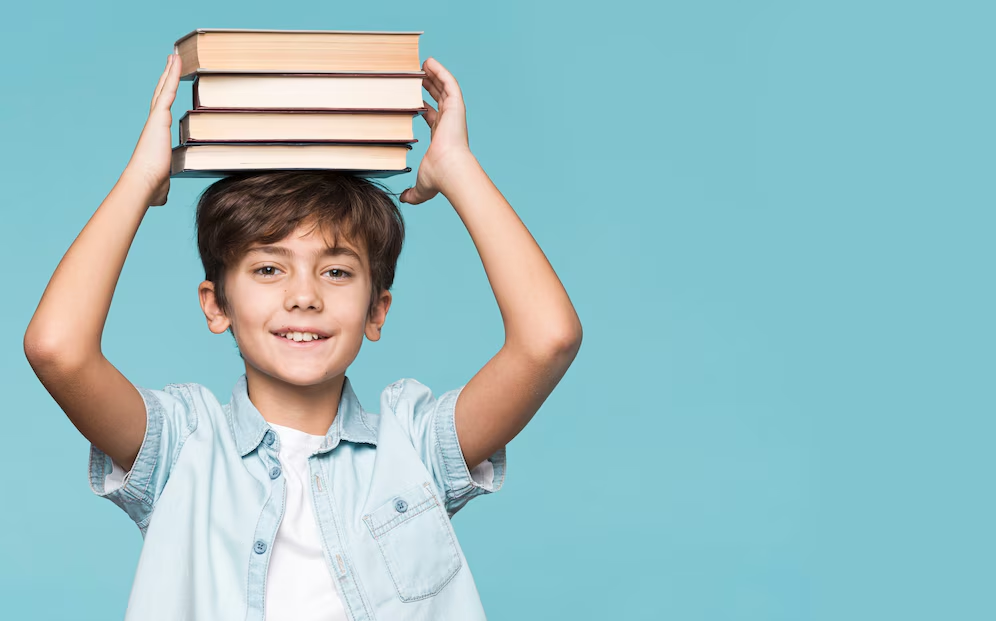Why Every Child Needs These Classic Children Books in Their Library
Every parent or guardian knows how important it is for a child to develop a love for reading. Reading helps children grow emotionally, intellectually, and creatively. But with so many books out there, it can be hard to decide which ones are best for them. When building your child’s library, there are a few timeless children books that should absolutely be included. These classic books have stood the test of time and continue to inspire young minds year after year.
In this blog, we’ll explore why these classic children’s books are essential for every child’s collection, and why you should make sure your little ones have access to them.
The Timeless Nature of Classic Children Books
Children’s books are more than just stories; they are gateways to imagination, learning, and emotional development. Classic children books often feature simple yet powerful stories, unforgettable characters, and timeless themes that speak to young readers. These books have been around for generations because they provide valuable lessons that children carry with them for years to come.
Simple Yet Powerful Lessons
Classic children books usually focus on fundamental lessons about kindness, honesty, courage, and friendship. For instance, “Charlotte’s Web” by E.B. White teaches children about the power of friendship, sacrifice, and loyalty. The beauty of these books lies in how they gently impart important values without being too heavy-handed or preachy. This helps young readers connect with the story in a natural way.
Unforgettable Characters
When you think about children’s books, certain characters come to mind: Winnie the Pooh, Peter Pan, Alice in Wonderland, or even The Little Engine That Could. These characters are memorable because they represent qualities that every child can relate to—curiosity, bravery, hope, and imagination. These characters become like friends to children, providing them with inspiration and helping them navigate their emotions.
Timeless Themes
Themes like adventure, overcoming challenges, and personal growth are prevalent in classic children books. These books are perfect for young readers because they explore these themes in ways that are accessible and fun. Whether it’s discovering the importance of teamwork in “The Wind in the Willows” or learning how to handle fear in “Where the Wild Things Are,” these books give children the tools they need to understand their world better.
Why Young Children’s Books Are So Important for Growth
When your child is young, their brain is developing rapidly, and the books they read can have a significant impact on their cognitive and emotional growth. While all children books offer value, young children’s books are especially designed to cater to the needs of early readers. These books help develop essential skills, such as language, problem-solving, and social-emotional understanding.
Developing Language Skills
At a young age, children are still mastering language. Reading books helps improve their vocabulary, comprehension, and listening skills. Classic young children’s books, like “Goodnight Moon” by Margaret Wise Brown or “The Very Hungry Caterpillar” by Eric Carle, offer repetitive language patterns, which help young children recognize words, phrases, and sounds. These books also introduce children to new vocabulary in an engaging way, making learning feel like fun rather than a chore.
Fostering Imagination and Creativity
Young children’s books often feature elements of fantasy and imagination. For instance, in “Alice’s Adventures in Wonderland” by Lewis Carroll, Alice enters a world full of strange creatures and wild adventures. These books encourage children to think outside the box, ask questions, and explore different possibilities. This boosts their creativity and helps them become more open-minded and flexible in their thinking.
Building Social-Emotional Understanding
As children grow, they begin to understand their emotions and the emotions of others. Books like “The Tale of Despereaux” by Kate DiCamillo help children explore complex emotions like bravery, loneliness, and compassion. Classic children books show kids how characters navigate challenges, which teaches them how to manage their own feelings and interact with others in a healthy way.
Why You Should Include Classic Children Books in Your Child’s Library
Building a library for your child is not just about giving them books to keep them busy. It’s about offering them the tools to learn, grow, and develop a love for reading that will last a lifetime. Classic children books are a perfect foundation for this. Below are just a few reasons why these books are a must-have for any child’s collection.
Fostering a Love of Reading
One of the greatest gifts you can give your child is the love of reading. Classic children books are often written in such a way that children naturally get hooked on the story. The stories are fun and exciting, and the characters are relatable. When your child starts reading these books, they are more likely to develop a passion for reading. This will set them up for success in both academics and life in general.
Encouraging Early Literacy
Introducing your child to these classic books early on helps lay a solid foundation for literacy. Classic books like “Peter Rabbit” or “The Snowy Day” by Ezra Jack Keats are accessible, with simple language and beautiful illustrations that help children connect words with their meanings. This makes it easier for young children to understand the relationship between written and spoken language, improving their literacy skills.
Creating Meaningful Family Time
Reading classic children books with your child creates opportunities for quality bonding time. Sitting down with your little one and reading together not only strengthens your relationship but also provides a chance to discuss the story’s themes, characters, and lessons. These shared moments can become cherished memories that both you and your child will carry with you forever.
How Classic Children Books Benefit Your Child’s Emotional Well-Being
Apart from intellectual growth, classic children books have a huge impact on your child’s emotional health. These books can help your child develop empathy, self-esteem, and resilience, which are essential for coping with life’s challenges.
Building Empathy Through Characters
Classic children books are filled with characters who experience a wide range of emotions, from joy to sadness, and everything in between. As your child reads these stories, they develop empathy by understanding what others feel. A great example of this is “The Velveteen Rabbit” by Margery Williams. The story of a toy rabbit that becomes real through the love of a child is heartwarming and teaches kids the power of genuine affection and compassion.
Teaching Resilience and Problem-Solving
Many classic children books present challenges that characters must overcome, whether it’s a physical obstacle, like in “The Little Engine That Could,” or a personal struggle, like in “Matilda” by Roald Dahl. These stories show children that no matter how difficult things may seem, persistence and resilience can help them overcome challenges. These books inspire kids to keep trying and never give up, which is an important lesson for life.
Helping Children Process Their Emotions
Young children may not always have the words to express their feelings, but books can help them understand and process their emotions. Whether it’s dealing with fear, sadness, or excitement, classic children books provide a safe space for children to explore these feelings. This can help children feel validated and understood, fostering a sense of security and emotional well-being.
What Makes Classic Children Books Stand Out?
There are many children books available, but what makes the classics stand out? It’s not just their ability to entertain children, but also their enduring value and ability to transcend generations.
Enduring Popularity
One of the main reasons classic children books continue to be loved is that they stand the test of time. The stories are often simple, but the messages are profound, making them as relevant to children today as they were when first published. Parents, teachers, and children alike continue to choose these books because they provide timeless lessons that are applicable in any era.
Rich Illustrations and Imagery
Many classic children books are known for their beautiful, engaging illustrations. Books like “The Little Prince” by Antoine de Saint-Exupéry or “The Wind in the Willows” by Kenneth Grahame feature detailed and imaginative artwork that enhances the story. These illustrations help bring the characters and scenes to life, making reading a multisensory experience for children.
Building a Tradition of Reading
By including classic children books in your child’s library, you are also passing down a tradition of reading that spans generations. These books have been shared by parents and children for decades, creating a cultural connection between families and communities. Introducing these stories to your child helps them become part of this long-standing literary tradition.
Read Now!
Incorporating classic children’s books into your child’s library is an investment in their future. These books foster a love of reading, teach valuable life lessons, encourage emotional growth, and spark creativity. Whether it’s through timeless stories, unforgettable characters, or beautiful illustrations, classic children books offer endless benefits for young readers. So, if you haven’t already, start building your child’s library today with these incredible books.
If you need recommendations or help finding the best children’s books for your child, don’t hesitate to contact us. Let’s work together to make sure your child has access to the best stories for growth, learning, and fun!
Frequently Asked Questions
Why are classic children books important for my child’s development?
Classic children books help children develop language skills, emotional intelligence, and creativity. They teach valuable life lessons, such as kindness, courage, and empathy, and can foster a lifelong love of reading.
Can classic children books be enjoyed by all age groups?
Yes! Many classic children books are suitable for different age groups, from toddlers to early teens. The simple stories and memorable characters appeal to young children, while older children can appreciate the deeper meanings and lessons these books provide.
How do classic children books help with emotional growth?
Classic children books often explore themes like friendship, overcoming fears, and empathy. By reading these books, children can better understand their own emotions and develop empathy for others, which is key to emotional growth.
Are classic children books good for early literacy?
Absolutely! Many classic children books are designed with simple language and repetitive patterns, which make them perfect for young readers. These books introduce children to new vocabulary and help improve their reading and comprehension skills.
What are some of the best classic children books to add to my child’s library?
Some great classics to include in your child’s library are “Where the Wild Things Are” by Maurice Sendak, “Charlotte’s Web” by E.B. White, “The Very Hungry Caterpillar” by Eric Carle, and “Alice’s Adventures in Wonderland” by Lewis Carroll. These books offer valuable lessons and are beloved by generations.
How can I make reading classic children books a fun experience for my child?
Make reading time interactive and engaging by asking questions about the story, discussing the characters’ feelings, and encouraging your child to express their own thoughts. You can also use voices for the characters to make the story come to life and create a special bonding time.

